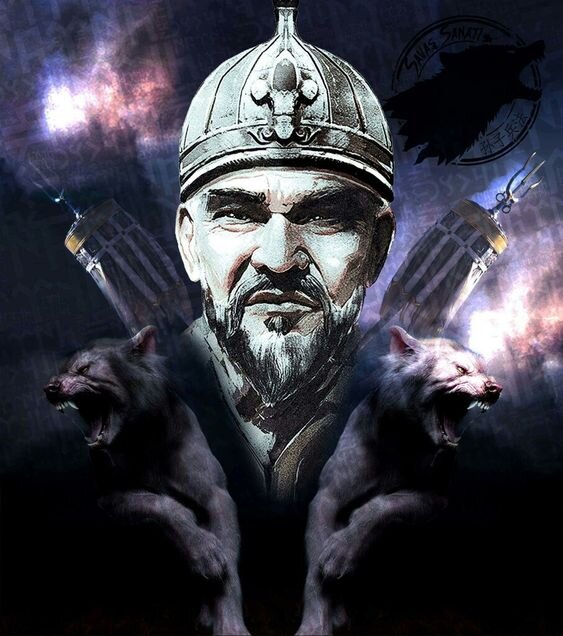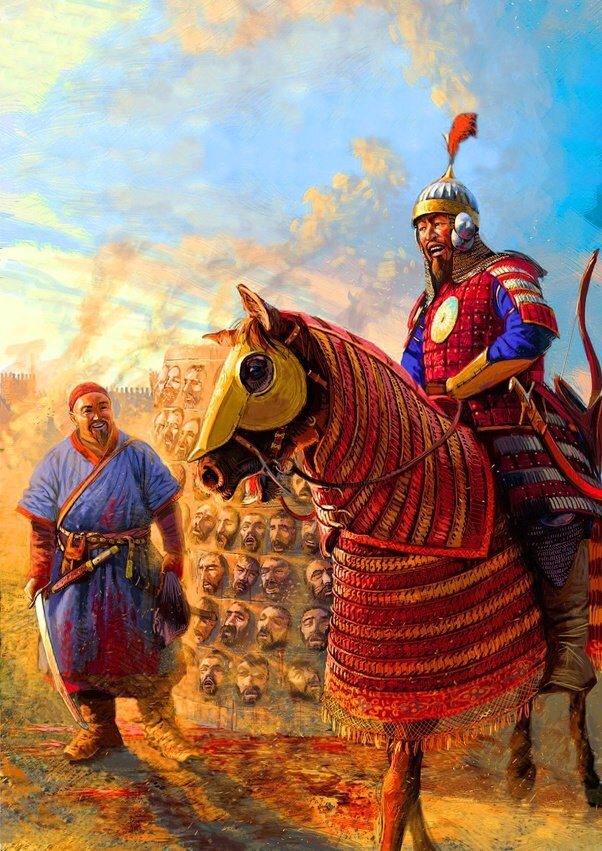Tamerlane began his military career as a commander of a band of brigands, which at other times numbered less than a dozen men. In the future, the successful ataman rose strongly, but still, in the struggle for power over Maverannahr was forced to rely on contingents of the Chagatai army. And its main force was made up of Turkic-Mongols, who fought in accordance with the decrees of Genghis Khan. At that time, they were both classical nomads and landlords who settled on the land. One of the latter was himself.

Later on, Timur began to increasingly recruit units from the settled population, regardless of nationality. Warriors of many Chagatai tribes received under him land plots with peasants, which at first were not inherited. The Emir preferred to use just such soldiers, who were tied to his state and were included in the centralized system of administration.
He relied much less on nomads, for the reason that the latter were mobile, and largely autonomous in an economic and political sense. Under him, the loyalty of such tribal groups was high, but the Timurids’ power over them weakened or disappeared completely after his death. Unlike other Turkic-Mongol states, Timur made little use of soldier-slaves — gulams and mamluks.
The basis of his power was made up of contingents of forty Chagatai tribes that had come to Maverannahr under the Mongols. As already mentioned, in the second half of the 14th century most of them were already sedentary. Each clan fielded a detachment according to its number, and in return these people were exempted from taxes. Military service was hereditary.
Cavalry could be light or heavy, but always used the bow as their main weapon. Spear thrusts, if used, were quite rare. The main melee weapons were sabers, and heavy cavalrymen had maces and axes. As a rule, nomads provided light cavalry, and landowners were able to acquire larger horses, good weapons and armor.

Since the role of infantry was greatly increased at that time, a considerable part of the army consisted of sedentary Iranians. Also, military officials and administrators were recruited from the urban Persian-speaking population. While the number of cavalry was more or less fixed, and due to limited resources could not be increased arbitrarily, the number of foot militia collected during some campaigns could be truly grandiose.
The main weapon of the infantrymen was also the bow. Although there were some units whose specialty was melee combat that used appropriate weapons. Soldiers from mountainous regions were used in mountain battles, and there were units of pontooners and engineers. And also scouts and supply men, which in the Turkic-Mongolian armies appeared under Genghis Khan.
Infantry, mainly used in sieges, had not very high combat effectiveness and was not considered reliable. Crossbows borrowed from the Western Islamic world were used in sieges. There were cannoneers, naphtha throwers and war elephants in the army. The use of hand-held firearms is controversial.
The Chinggis Khan decimal principle was used in the organization of the army, although other size units appeared. Koshuns had from 50 to 300 men, kuls were large units, the number of fighters in which was variable.

Officers were appointed from above, with an emphasis on quick management of forces. Weapons and armor were largely unified, with individual units differing in the color of their uniforms and banners. According to Mongolian tradition, the commander-in-chief did not participate in battles, his field headquarters was marked with a flag.
When gathering the army, soldiers arrived at the specified place on their own horse and with a supply of food. They had to have 30 arrows, a rope, a bow, a spear, a mace, a shield, and for ten men — a tent, a sickle, a saw, and an axe. At the same time, the officers took more horses and armed themselves much better.
On the march, the army followed a certain order, divided into center, flanks, rearguard and vanguard. During the parking it was surrounded by wagons, if possible ditch was dug. Campaigns were usually held in the warm season, the place of battle was chosen large and flat. It was considered desirable that there was a source of water nearby, and the sun did not shine in the eyes during the offensive.
Timur often used allied contingents, which were called by the Mongol word khashar. At this time it was not uncommon for captured enemy soldiers to be accepted into the army, although the man’s tendency to severely punish captured cities reduced the possibility of doing so.
In the advice that Tamerlane left to his successors, there was such a characteristic passage: «An enemy warrior who has proved loyalty to his master in battle is my friend. When he comes to serve under my banners, I praise him for his valor and loyalty, I am confident in him. But the warrior who, in a moment of
